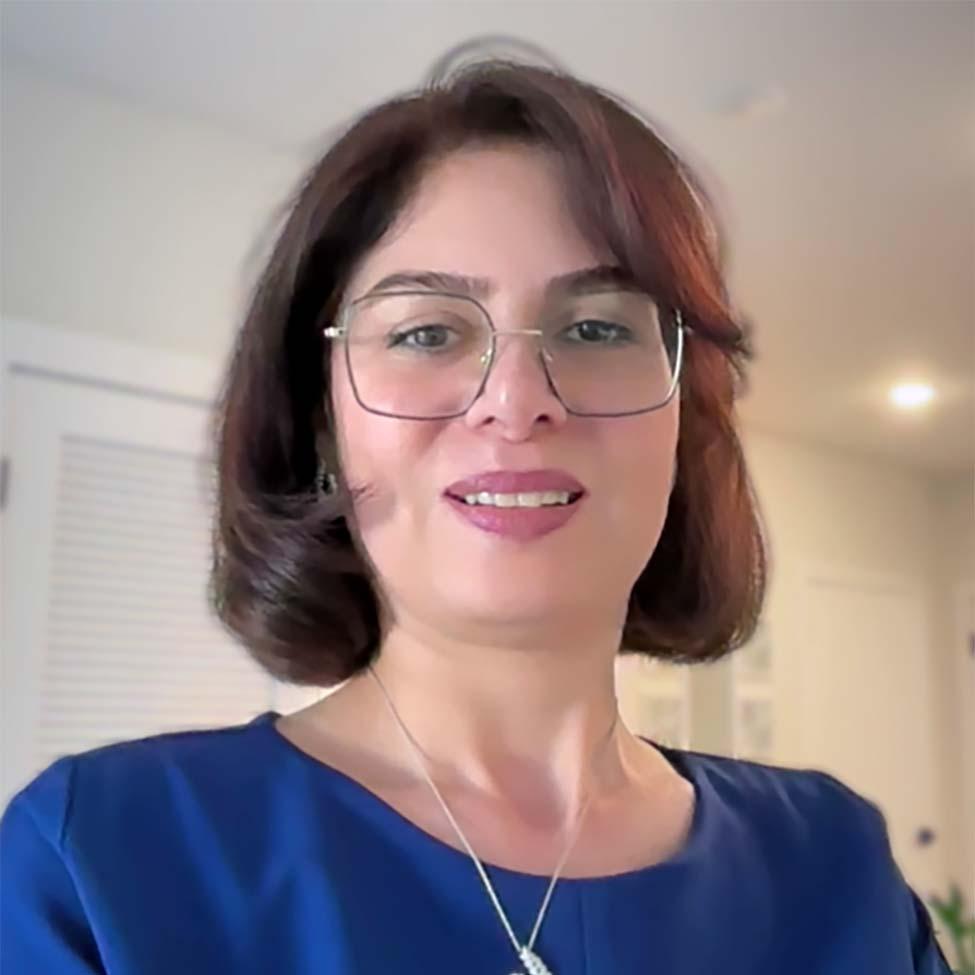
Introducing: Pace's Newest AI Expert
Artificial Intelligence. Data-driven machine learning. Computer Vision.

Seidenberg has long been known for its future-forward approach, tackling the latest developments in computing head-on. It’s fitting that the school’s newest faculty member, Assistant Professor of Computer Science Soheyla Amirian, PhD, has also long shared this sentiment.
Having earned her bachelor’s, master’s, and doctorate degrees all in computer science, Soheyla is poised to add a seasoned and innovative perspective to everything related to Artificial Intelligence at Pace. Among other initiatives, she’ll be bringing the Applied Machine Intelligence Initiatives and Education (AMIIE) Laboratory to Pace, dedicated to bridging the gap between Artificial Intelligence research and real-world problems—exploring topics ranging from health informatics to surveillance and security.
We recently had the opportunity to chat with Soheyla, who shared her academic background, her current research pertaining to leveraging AI models to improve medical imaging analysis, and why she’s extremely excited to join the Pace Community.
Can you briefly describe your academic and research interests?
My academic and research interests revolve around the fascinating world of Artificial intelligence (AI). AI is the science of making computers perform tasks that typically require human intelligence. For instance, training a computer to recognize objects in CT images, such as distinguishing between a cancerous and non-cancerous lung nodule, is part of computer vision.
Deep learning is, however, a method we use to achieve this, where we train artificial neural networks to learn from large datasets, improving their accuracy and capabilities over time. My work also spans into AI, which is about building smart systems that can function intelligently and independently, performing tasks in an automatic fashion with high accuracy, like decision-making or language understanding.
What are you working on right now that you are currently excited about?
Currently, I am working on exciting projects that involve developing, training, and validating AI models to enhance medical image analysis, particularly in Musculoskeletal settings, like knee and hip replacement. The goal is to improve the accuracy and efficiency of AI-enabled predictive models from different image modalities, ranging from X-rays and MRIs to CT scans and ultrasound images. These advancements hold significant potential to assist physicians, surgeons, and even patients by providing assistive technologies for more precise detection and identification of complications.
You’ve noted the importance of making complex scientific concepts easily understandable to a wide audience. Would you be able to elaborate the importance of this idea, particularly given your academic focus?
Effective communication is crucial, especially in complex fields such as AI. Making intricate scientific concepts accessible to a wider range of audiences, including those with limited technical background, is essential for several reasons. Firstly, it helps in gaining the trust and support of stakeholders, such as funding agencies, end-users, policymakers, and public communities.
Secondly, it fosters interdisciplinary collaboration by enabling experts from different sectors to understand and contribute to AI research and education. Finally, as a teacher, it is vital to inspire and educate the next generation of scientists, engineers, and the workforce, ensuring they accurately grasp all foundational concepts and underlying algorithms, thus they can build upon them.
Effective communication is crucial, especially in complex fields such as AI. Making intricate scientific concepts accessible to a wider range of audiences, including those with limited technical background, is essential for several reasons.
You’ll be bringing the Applied Machine Intelligence Initiatives and Education (AMIIE) Laboratory to Pace. Can you talk a little about the AMIIE Lab, and the importance of interdisciplinary collaboration?
Leading my AMIIE Laboratory is an incredibly rewarding experience. The lab focuses on bridging the gap between theoretical AI research and practical applications. We work on various applied and fundamental AI projects that solve real-world problems.
Interdisciplinary collaboration is at the heart of our efforts. By bringing together experts, ranging from computer scientists and AI practitioners to clinicians and surgeons, my AMIIE Lab can approach problems from multiple angles, leading to more innovative and comprehensive computational solutions. This collaborative platform not only enriches our research and educational activities but also provides a holistic learning experience for our students. Interested individuals are encouraged to visit the AMIIE Lab regularly to stay informed about opportunities, news, and updates on our research and activities.
What excites you about coming to Pace? How do you feel like your expertise, particularly in AI, can help raise the profile of Seidenberg?
I am deeply honored and excited about joining Pace University for several reasons, one could be Pace’s commitment to innovation and excellence in education and research. The Seidenberg School's focus on advanced technology and its applications aligns perfectly with my expertise in AI. I believe my background in developing AI solutions for diverse fields can contribute to Pace's reputation as a leader in technological education and research.
By integrating AI into various academic programs and fostering collaborative projects, I aim to enhance the learning experience for students and drive forward impactful research initiatives. This can help raise the profile of Seidenberg as a hub for cutting-edge technology and interdisciplinary collaboration, moving “together”, fast and boldly forward.
The Seidenberg School's focus on advanced technology and its applications aligns perfectly with my expertise in AI. I believe my background in developing AI solutions for diverse fields can contribute to Pace's reputation as a leader in technological education and research.
Anything else you'd like to add?
I believe that all world-class programs and resources at Pace University combined with my expertise in fundamental and applied AI creates a robust and promising framework for success and meaningful contributions to our society.
I am eager to collaborate with the outstanding faculty, staff, and students at Pace University. I am passionate about fostering an inclusive and collaborative environment where innovative ideas can thrive. Together, we can explore the vast potential of AI and its applications, driving positive change and advancing knowledge in exciting new ways.


